On our first day visiting Taos, as our very first activity, we visited the San Francisco de Asis Mission Church (pictured above) in the small suburb of Ranchos de Taos. We reached the 18th century church via a maze of narrow, unpaved, muddy roads with Spanish names. The plaza of the church is ringed by adobe structures in various states of decay. In the plaza we saw pasty white tourists toting cameras circling the church, while two older men leaned against a wall under a shade tree and conversed in Spanish. I haven’t spent much time in Mexico, but this scene is pretty much exactly what I would expect to see in a small Mexican town with a historic church.
From our very first experience, New Mexico has a much stronger Hispanic feel than any place we have encountered since leaving Miami. I expected Tucson, where we spent a month last winter, to be more Latin-influenced given its close proximity to Mexico, but I suppose that the legions of retirees fleeing northern winters, Air Force personnel posted at the air base, and people from all over the world associated with the University of Arizona have diluted Tucson’s original Hispanic character. Not so in Taos, which remains a very small town (under 6,000 people) tied closely to its historical Mexican and Native American roots.
Millicent Rogers Museum
Another of our first stops in town helped us dig into the deep cultural roots of the area: the small but terrific Millicent Rogers Museum. Focused exclusively on the arts and crafts of the southwest, the museum deftly illustrates the history and interaction of Native American, Hispanic, and Anglo peoples in the area. The setting of the museum in a historic hacienda is an ideal atmosphere for the presentation of the cultural objects.
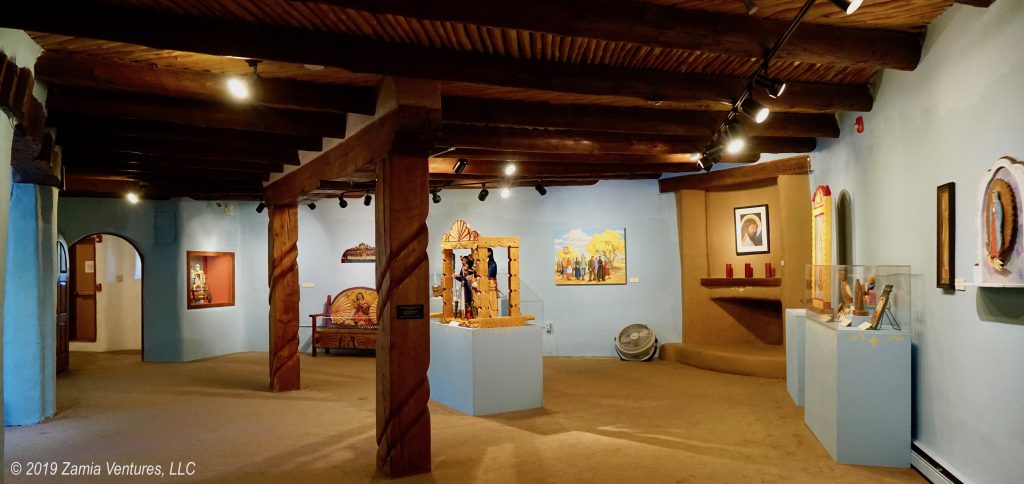
The museum helped explain a lot of the striking aspects of southwestern design. In Hispanic works, particularly religious works like carved santos, the persistence of highly idiosyncratic folk art styles is explained by the remoteness of the region and the relative lack of contact with European artisans or materials. The extreme violence of the depictions of Christ and saints is attributed to the harshness of life in a difficult and remote place. The museum had small but interesting displays on some of the classic Hispanic crafts of the region like tinwork and straw applique, along with a heavy emphasis on sacred artwork ranging from the historical to the modern.
Native American crafts are illustrated with collections of textiles, pottery, baskets, and jewelry, and each collection shows the evolution of the craft. In every case, the craft went through three basic stages. The oldest works — made before the advent of significant contact and trade with the East Coast — were produced for personal use or trade with other tribes. Once transcontinental train service brought entrepreneurs to the area, each craft went through a phase of being produced primarily for an export market, often using new materials like chemical dyes, with designs that the purchaser-exporters believed would appeal to eastern buyers. Finally, each of the crafts evolved in the modern era into a vehicle for personal expression of artistic intent.
Gallery Hopping in Taos
Taos is known for its visual art, so of course we made it a priority to spend time wandering through some galleries. One gallery representative told us that Taos County, NM has in absolute numbers — not percentages — more working artists than any other county in the US other than Kings County, NY (Brooklyn). I haven’t been able to verify that claim, and I am quite skeptical that this could be true for a county with under 35,000 residents, but there is no question that Taos is a significant center for the arts. Anglo artists have been coming to Taos for a hundred years to take in the brilliant light, colorful sunsets, and unique architecture and produce works inspired by this landscape. The historic downtown area is just packed with dozens of galleries ranging from tiny places with storefronts barely wider than a single door to large spaces made of several connecting buildings. There were works in every style and many different media. You know an art scene is pretty serious when a town has both an Artist Collective and the Taos Community Center Art Co-op.
We probably went in a dozen galleries, and there were dozens more that we passed by without visiting. Some of our favorites were Bryans Gallery (mostly historical and contemporary Native American works), Wilder Nightingale Fine Art (local painters with an eclectic array of styles), and Copper Moon Gallery (sculptures and artwork from different artists sharing a whimsical flair). We also wandered through the Plaza area of the downtown, where we caught the tail end of the weekly farmer’s market. The vendors appeared to be actual local farmers and ranchers, with different specialties in fresh vegetables, meats, and cheeses. The buildings in the downtown historic are uniformly built in the classic adobe style, with those ubiquitous blue doors, making for a pleasantly cohesive feel throughout the city center.
We stopped for lunch one day at a little hole-in-the-wall Mexican place, and as one might expect everything we ate at La Cueva Cafe was outstanding. Our entrees (enchiladas with various sauces — green chili for Ken, mole poblano for me) were tasty and authentic, but for me the real standouts were the house made roasted chili salsa and guacamole served with freshly made tortilla chips.
Outside the Downtown
While we appreciate and enjoy art, we are also well aware that “up-and-coming artsy enclave” is realtor-speak for “dumpy area near railroad tracks where you might not feel comfortable leaving your vehicle overnight.” Artists, especially those of the starving variety, tend to find workspaces that are cheap, and cheap usually means undesirable. There is no better example of this than the trendy Wynwood area of Miami, which we visited to check out its famous street art, but which is also infamous among locals for historically being hands down the most dangerous part of a fairly crime-ridden city.
Taos Canyon, which we drove through each time we traveled from our campsite into town, had quite a few studios lining the narrow canyon. At the same time it also had many things that I consider indicators of high poverty areas: Homes built from a seemingly ad hoc collection of building materials, including shipping containers used as parts of structures. Rusted out cars sitting in overgrown yards. Ancient RVs turned into permanent housing with the addition of a permanent roof and decking areas. Road signs and historical markers riddled with bullet holes.
All this left us on the fence as to whether we found Taos more charming or shabby. In the end, the friendliness and openness of the people we encountered in town and in the state park had us leaning toward charming. Even though it was surprising to see so many crumbling adobe structures, weirdly assembled groups of buildings, and dirt roads, we certainly never felt unsafe or uncomfortable.
Eagle Nest Lake State Park
Our campsite for the week was at one of the many New Mexico state parks focused on a lake. Eagle Nest Lake State Park is about 30 miles east of Taos, but the winding road through Taos Canyon meant that our trips into town lasted about an hour each way. Fortunately our spot in the Lakeside Campground offered us plenty of activities for days when we didn’t make the drive into town.
The large lake is a haven for water birds, and we enjoyed seeing white pelicans, great blue herons, and ospreys skimming over the lake. The shore areas were alive with songbirds and bursting with late season wildflowers. Red tailed hawks patrolled the skies over the entire valley. The campground was alive with scampering ground squirrels who amused us with their curiosity. There were trails along the edge of the lake heading both north and south from the campground, rolling gently through fields of wildflowers and offering views of the lake. Our campsite was enormous with unobstructed views of the lake, and a real bargain at $10/night. We even enjoyed one of the famously colorful Taos sunsets one evening.
Cooler temperatures inspired me to do a project that I have been waiting for all summer: trying to bake yeast bread at high elevation. With our campsite sitting at well over 8,000 feet, I figured this was a great place to figure out why baking books always have special instructions for those at high altitude. Spoiler: making bread was basically the same as usual. I added some extra water to the dough to compensate for the very dry air. With lower air pressure, the yeast definitely caused the dough to rise more quickly, but the rise time was only reduced by about 25%. If I hadn’t been scrutinizing the process I might not have noticed the difference at all. The upshot is that, based on my single totally unscientific experiment, RVers who like to bake should not be afraid to visit Colorado and New Mexico.
During the last three days of our stay we were plagued by cold, windy, rainy conditions, so we never made it out to see the Rio Grande gorge or Rio Grande del Norte National Monument. We have something to look forward to during our next visit, and the rain did provide one unexpected benefit:
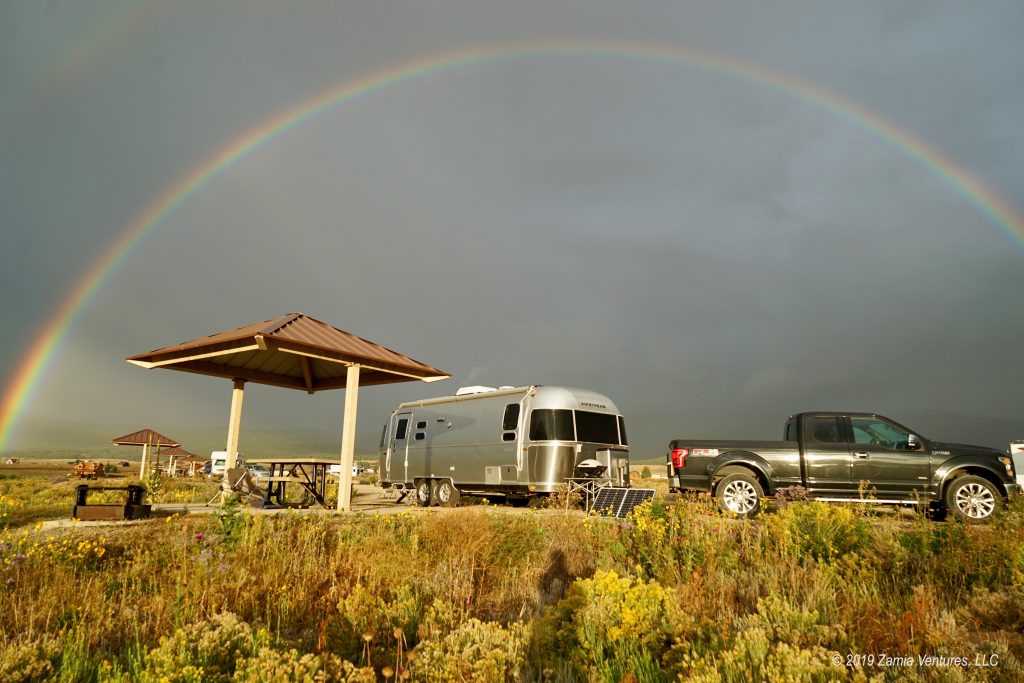
Next we head to Santa Fe for more art, museums, and history in the state’s capital.
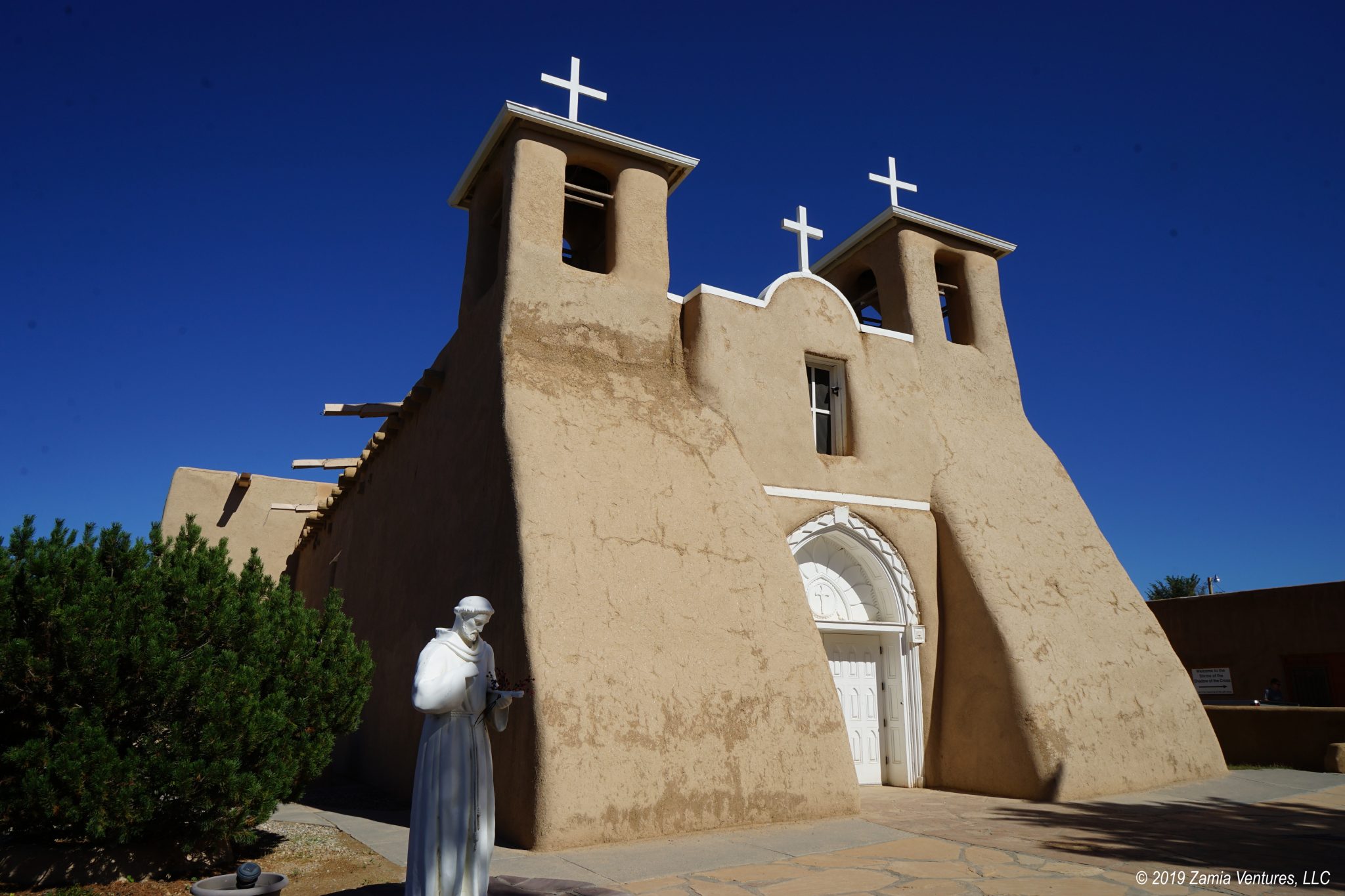
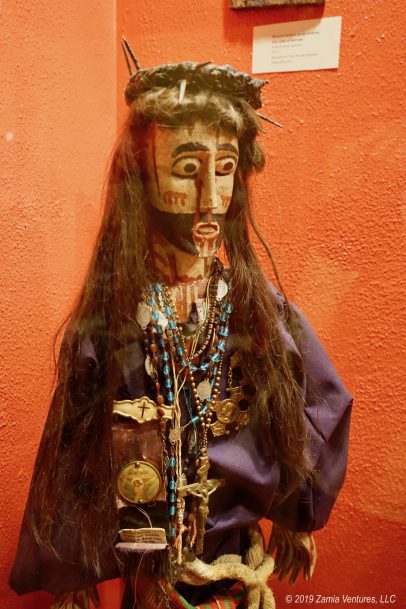

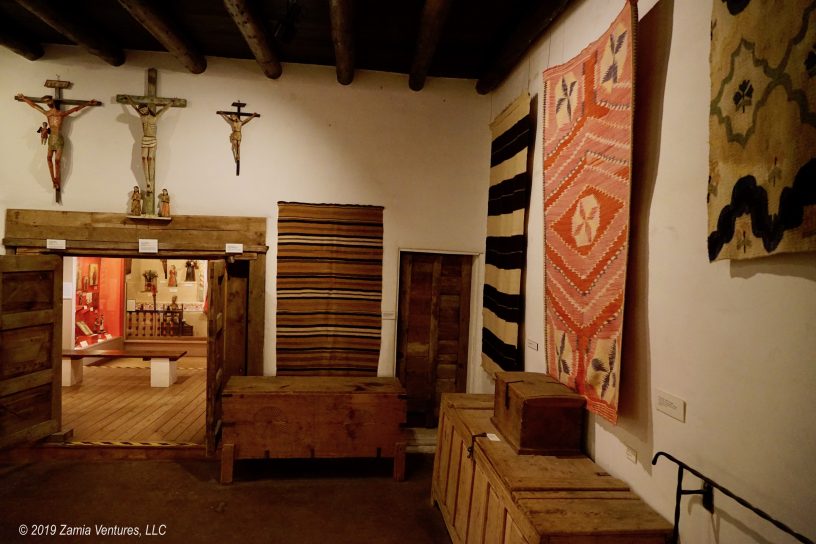
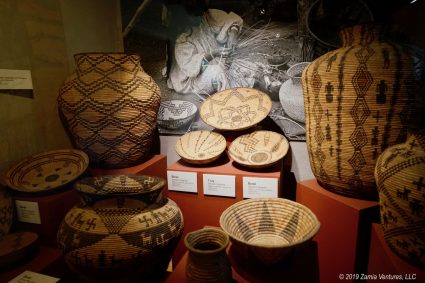
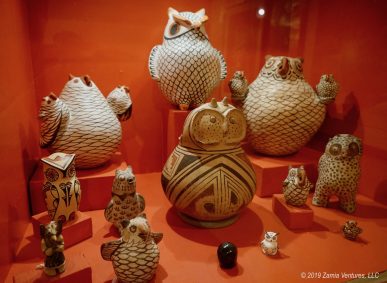
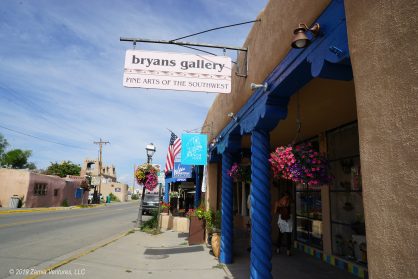
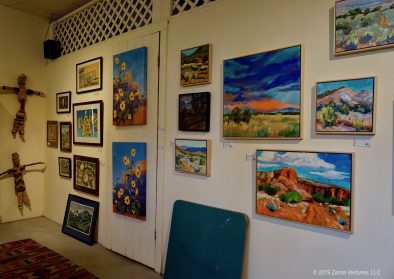
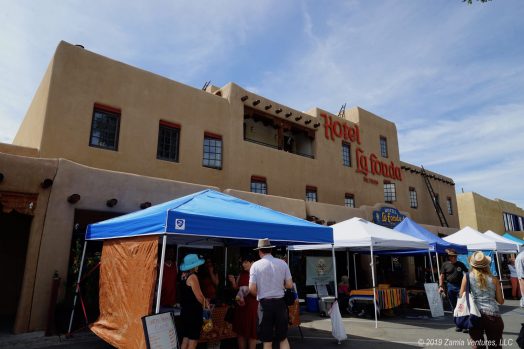
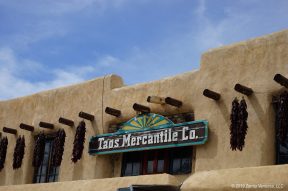
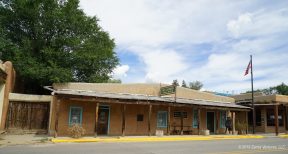
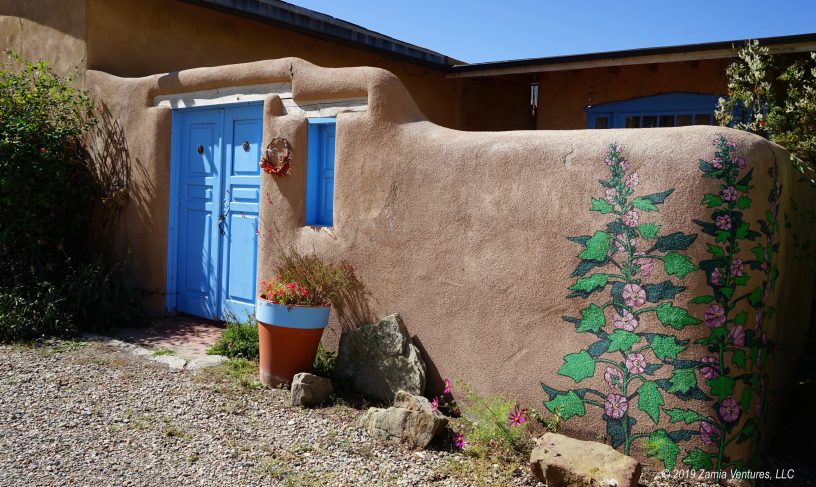
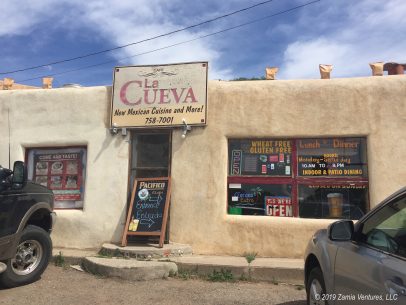
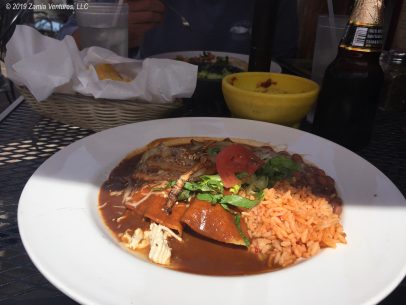
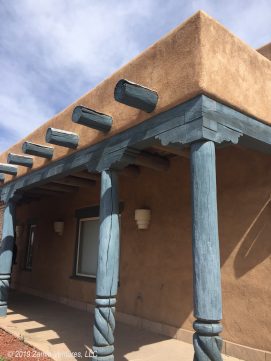
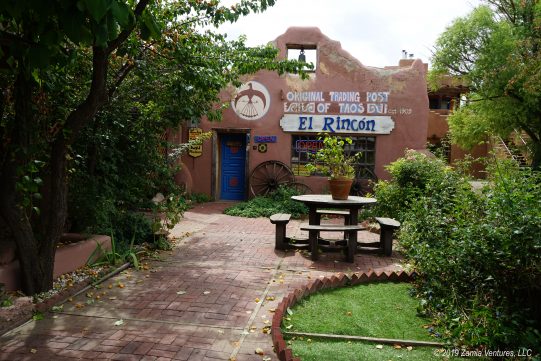
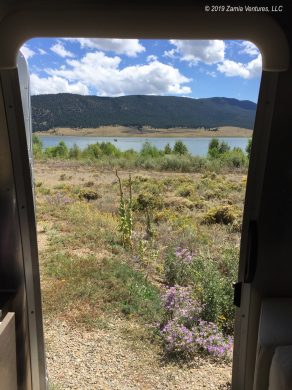
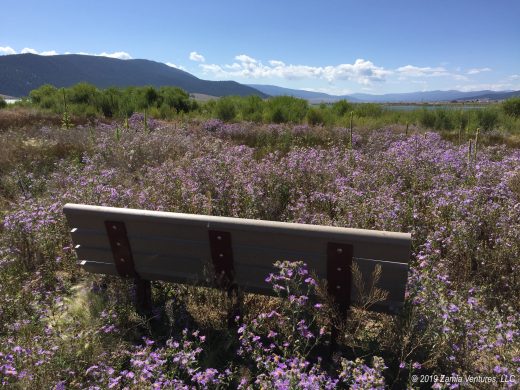
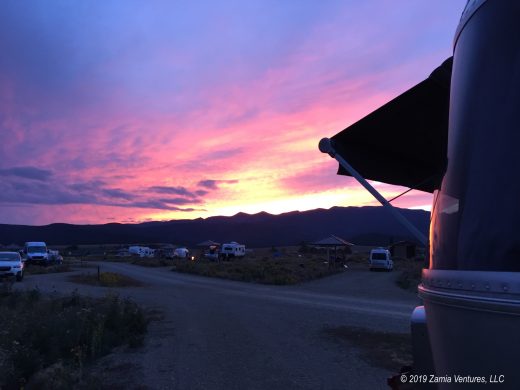
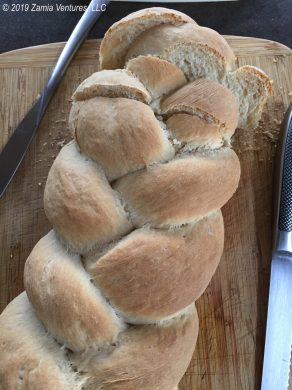

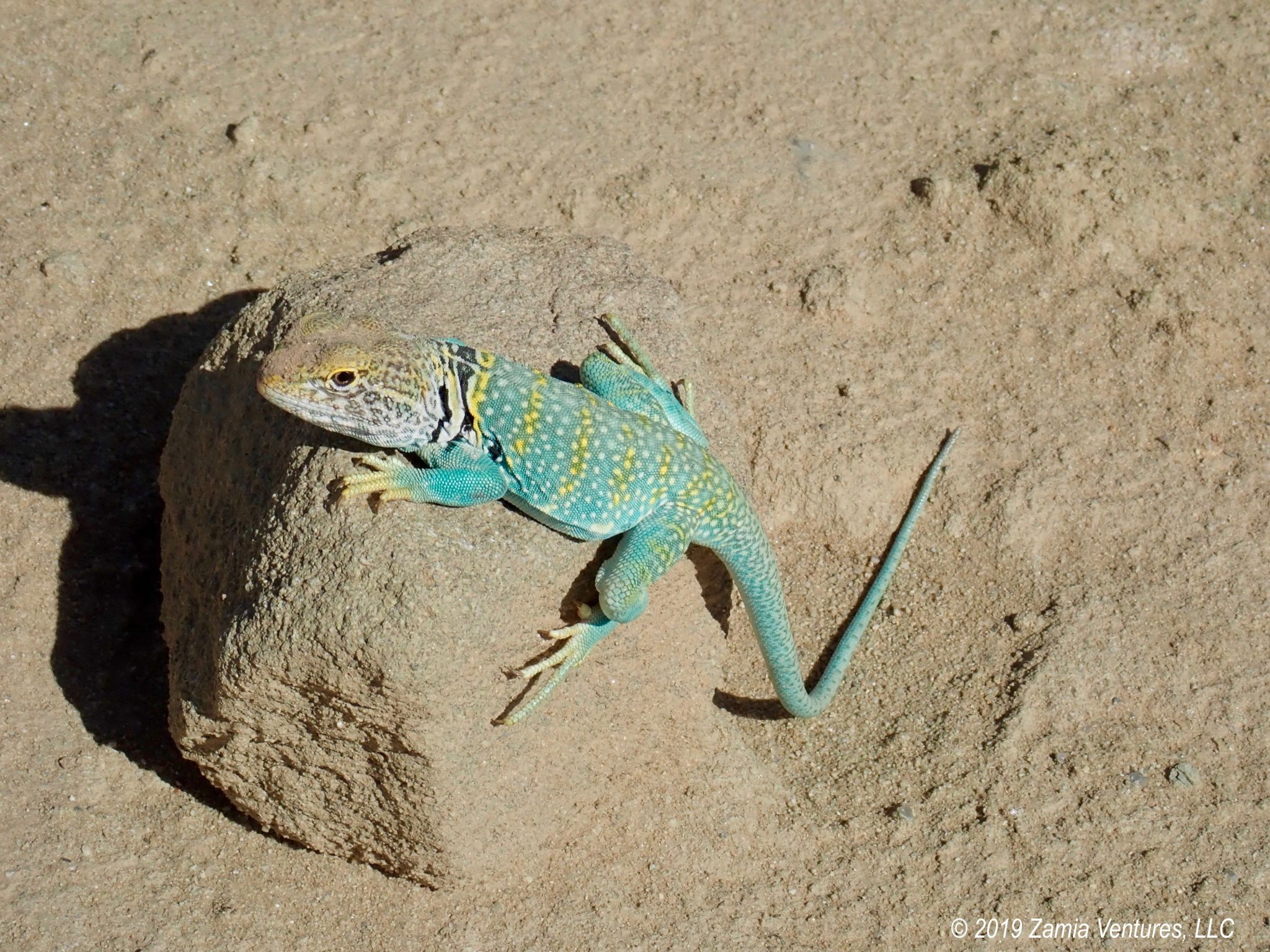
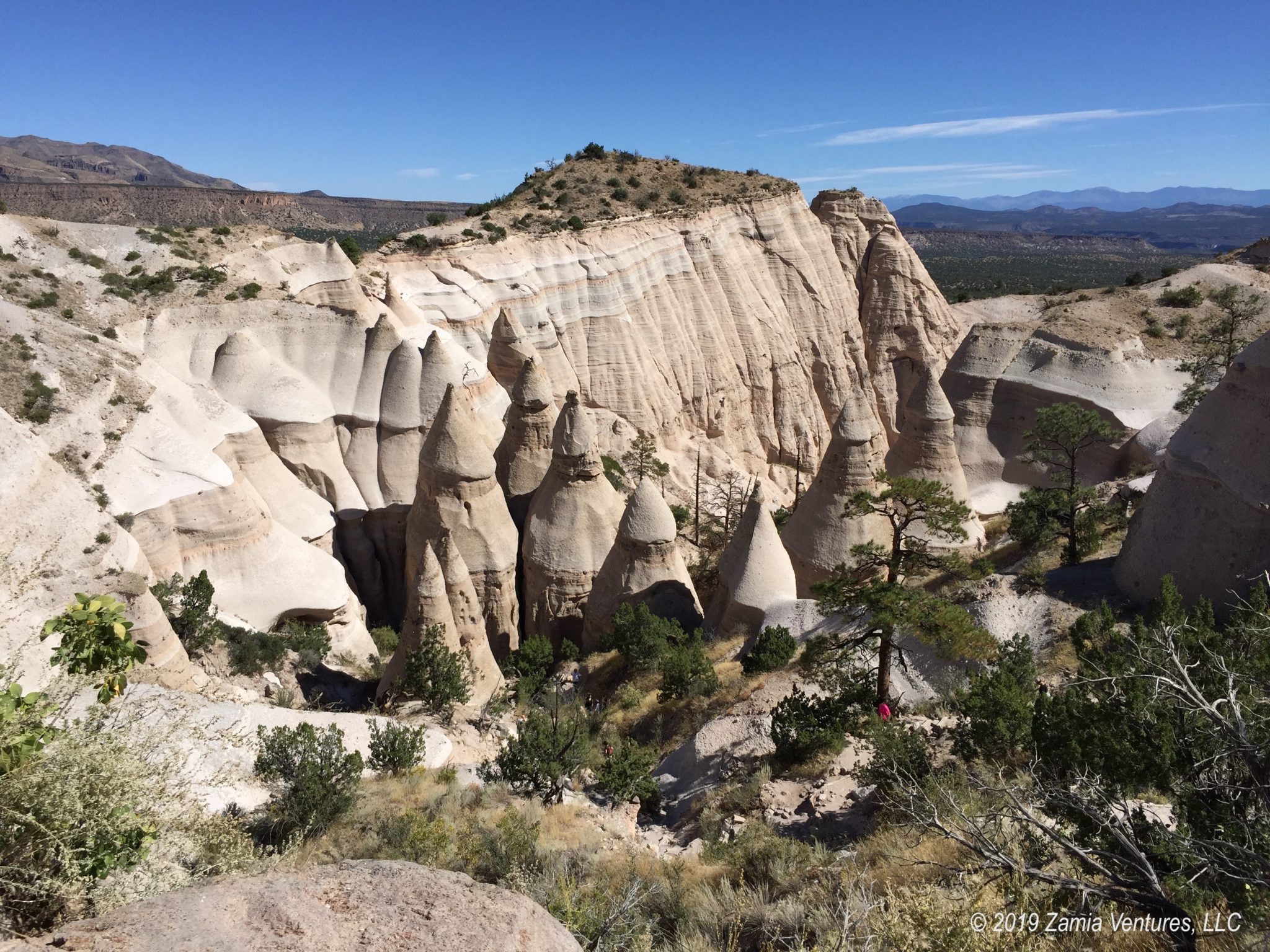
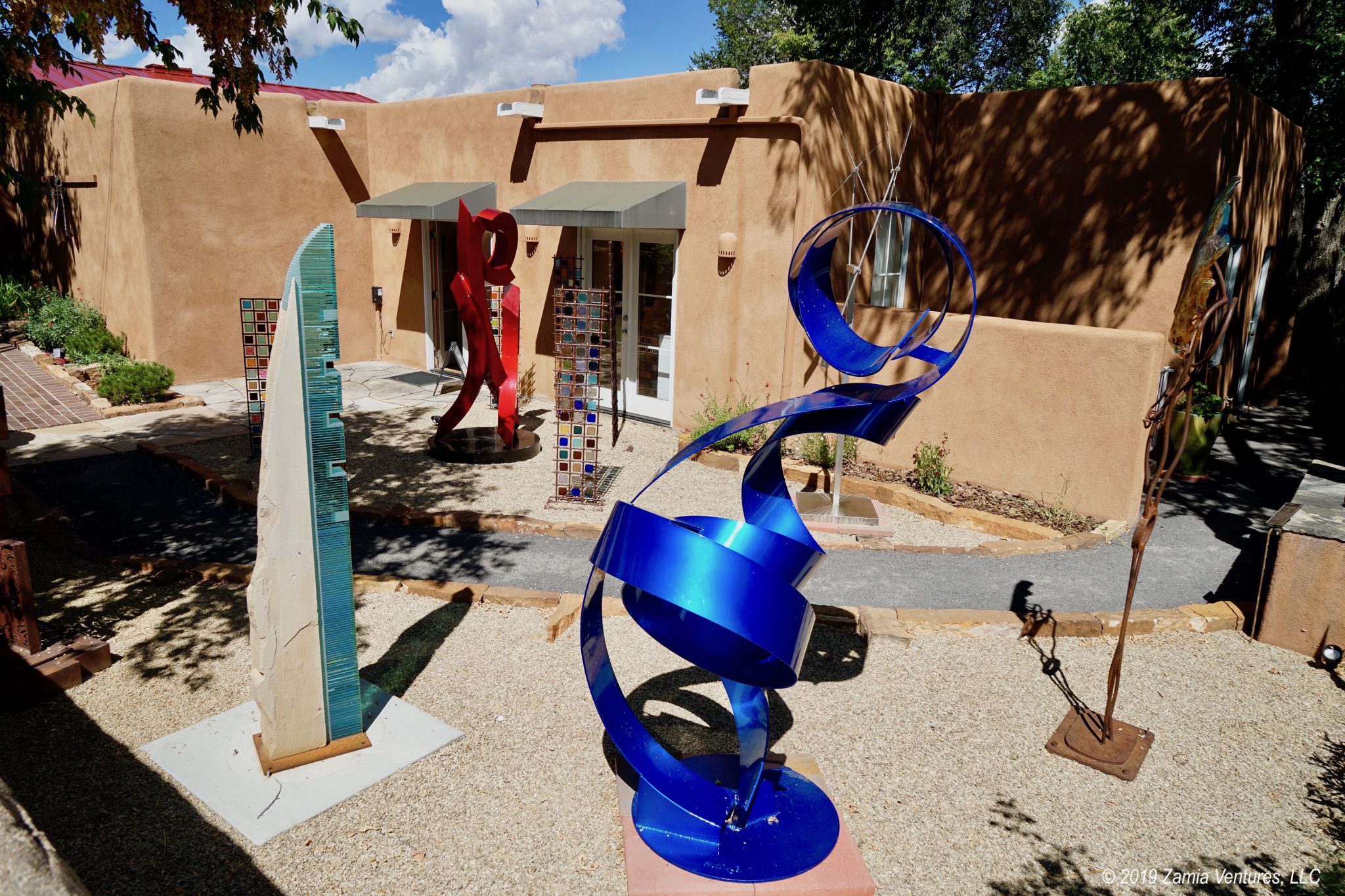
We’ve spent quite a bit of time in the Santa Fe/Taos area and never tire of it, despite many visits over the past 20 years. In fact, it’s still a place that’s high on our list for when we decide to stop traveling! There’s something magical about the quality of light and the landscape, not to mention the interesting intersection of cultures (Hispanic/Indian/Cowboy) and the fabulous food. Taos is definitely charming and shabby, as you said. How about charmingly shabby? 🙂
I’m so glad you discovered the Millicent Rogers Museum! It’s one of my all-time favorites. You did a great job of explaining the evolution of Native American crafts. One of the things we’ve found interesting in our Southwest travels is seeing the evolution of contemporary Native American artists busting out of the rut of traditional pottery/baskets/jewelry/rugs made for the tourist trade. (Although I do also love the traditional crafts.) I appreciate that you include your art explorations in your blog—we find art makes our travels so much richer. Cool capture of your rig under the rainbow!
Northern New Mexico seems pretty glorious in the spring and fall but I’m not sure I could handle either the summer heat or the winter cold. But then again, traveling around the country and always visiting places at their peak or near-peak times may have spoiled us. Also, being in a house rather than an RV would make a difference. In any case, I can see the cultural appeal of this place — it really feels both multicultural and artsy, which is a combination that’s surprisingly hard to find outside of big urban areas.
You know, of course, that I found out about the MRM from your blog, right? It really is a little gem. I even liked the mystery — never really answered to my satisfaction — of how a world traveling fashionista and socialite ended up falling in love with what must have been a very small, dusty, remote town in the 1940s. I was also very happy to see some of the more modern Native American works in the museum and in various galleries that are breaking from traditional styles and forms. We don’t really love the heavily traditional southwestern styles (for art, jewelry, pottery, etc.), but we really enjoyed more modern works with bold, bright colors and non-traditional designs. Selfishly, the emergence of these more modern styles means we might actually be willing to buy something.
I’m so glad you were able to glean something helpful from our blog (even in its early phase, and with my photos disappearing from a big blog update, which I know you understand.) It makes me happy when our explorations benefit our traveling friends. (I think I did a better job with our Santa Fe post from 2016.)
I also found Millicent Rogers to be a fascinating individual with impeccable taste! A return visit to the museum is on our agenda when we get back to Taos, which I hope will be sooner rather than later.
You will not be surprised to learn that you have also provided an excellent roadmap for our adventures this week in Santa Fe. 🙂
We’ve known several RVers who have settled in Taos and know that people just love it. Unfortunately, we missed it this year because we just couldn’t stomach the idea of more time in the cold. We’ll get there eventually, but will make sure our plans coincide with late Spring or early Fall. (We are such weather wimps now…)
Anyway, it’s nice to see such a focus on authenticity in an area that has attracted so many outsiders. It is so easy for things to go a different way. But, as you point out, there are downsides as well, namely, these overly rundown and sometimes unsafe areas. I’m glad to hear you never felt unsafe there. (The bullet holes in the signs and markers would concern me.)
Looks like another beautiful New Mexico state park. Next time we travel through the state, we’ll definitely be getting the annual pass and taking advantage of that fantastic system.
We love the ocean too much to consider Taos as a permanent residence, but I can definitely see the appeal for RVers. There seems to be a real sense of community, with tons of outdoor and arts activities happening year round. Plus the location is pretty central as a base for travels even after putting down roots in a sticks and bricks location. I definitely didn’t have safety concerns, but the bullet holes (and weird construction methods) were more a reminder that it’s a small town surrounded by very rural area.
The New Mexico state parks have been great so far, and we plan to visit three more this fall. Guess which moron didn’t buy the state park pass? But the full price for camping (usually $14/night for electric) is so affordable I am not regretting it that much.
Eagle Nest is one we haven’t visited (yet!) as it just didn’t line up with our routes this year. We have visited the Santa Fe area years ago and loved it there, too. With all the time we’ve spent in the state, it’s hard to believe there is so much more to do, but yay!
The bread looks both beautiful and scrumptious! It was nice of you to experiment so that others could put their baking fears to rest 😀
I think you guys will like Eagle Nest when you get there (eventually) even though the hiking within the park is limited to relatively flat trails along the lake shore. The park is fairly close to the Taos and Angel Fire ski areas, as well as the Carson National Forest, so there are plenty of more challenging trails to explore in those areas.
As for the bread — I was expecting total disaster, since part of our purpose in life is to serve as a warning to others (blog conversion, anyone?). I was pleasantly surprised that it turned out so well, even though it makes for a less interesting tale.